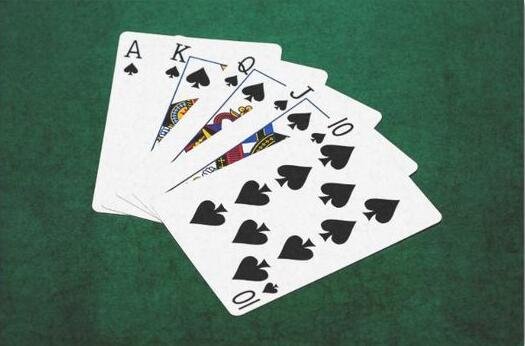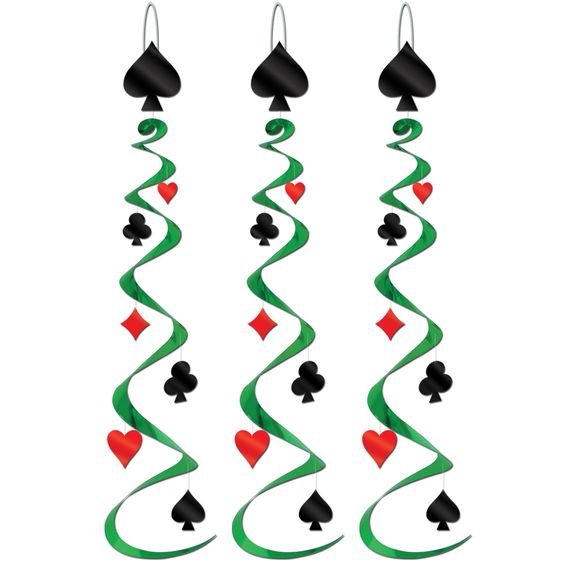As a world popular playing card game,did you know the history of it?
There are many different versions of its origin, many cultures, symbols, and even astronomical calendars can be represented by it.
What we are talking about here is mainly the version that is accepted and recognized by most people.

Playing card has a mysterious relationship wieth ancient astronomical divination,From the numbers of the cards we can see: there are 54 cards in a deck,except for 2 kings and kings,there are 52 genuine cards.Divided into four groups of spades,hearts,flowers and diamonds.52 genuine cards just represent 52 weeks in a year,and 4 set of suits represent the four seasons.If you change JQK to 11,12 and 13,if the big and small kings are counted as half points,the total number of points for a deck of cards is 365 days.These wonderful numbers,symbols,characters,and printing standards are not coincidental.
Although the playing methods are different, people from all over the world are basically playing the same set of playing cards. How did poker become a standard in the world?

This start with the earliest playing cards. As early as the 14th century, playing cards spread from Central Asia to Europe. At that time, there were a wide variety of playing cards. The Italians played poker in the four colors of the Islamic holy grail, swords, coins and polo sticks; the Germans played poker. The four-color playing cards of red hearts, acorns, bells and leaves are printed on carved wood panels. The productivity is advanced, and there are more printed cards. German symbols once became the mainstream. It is the French who can achieve the unification of European solitaire. The French improved the symbols on the basis of the German suits and made the four suits of spades, hearts, shamrocks and diamonds that we are familiar with today. They also subtracted the colors, simplifying the suits of the cards into red and black, which brings great convenience to manual coloring. The French of lan and san also stenciled the pattern of the solitaire to facilitate printing. At this time, Gutenberg’s letterpress printing emerged in Europe. While laying the foundation for the spread of Renaissance and Enlightenment ideas, it also expanded the business of French solitaire by the way.
In the 16th century, Lyon and Rouen in France became important towns for card production, and French cards quickly flocked to European countries. In addition to the convenience of printing, the French also gave each ace of JQK the role of an epic hero to facilitate marketing and promotion. Take four kings as an example. The king of spades is actually David who is often beaten. The king of hearts is also called suicide. Its sword is for himself, referring to Charlemagne, and the flower k refers to Alexander. , The King of Square is Caesar. In the past, the French would print the king’s name on the card, but after the French Revolution overthrew the monarchy, the role of the card slowly faded. With the war and trade, French solitaire came to England to continue to shine. Britain began to levy stamp duty in 1712, and each set of cards must have traces of taxation before they can leave the factory.

The initial operation is to have the executive officer stamp the first card of the tax-paying card, which is the ace of spades, with an ink stamp. Later, the British thought of a more ruthless trick. At the end of the 18th century, the British government simply monopolized the manufacture of the ace of spades. The manufacturer produced a deck of playing cards and had to go to the post office to purchase the ace of spades at the tax payable in order to get a set of cards. At this time, the ace old ace, who has the official pass status, has a reason to be bullish, and the design of the ace of spades of different denominations is also different. This also makes the ace of spades in every deck of cards in our hand nowadays special, different from other cards.
The modernization of playing cards was also done in the UK. As I just said, the French simplified design cards still need to be colored by hand. The digital cards are not a big problem, but the fancy king cards are still more laborious to improve. In the 19th century, the Englishman Thomas De la Rue solved all this. He uses letterpress printing, one plate for each color, so that an old K with complex colors can also be accurate in color, and the roots of the hair are distinct. To hold the cards printed in this way, paper also has its own particular ways. In the past, playing cards were printed on one side, which was easy to transmit light and would be remembered after stains on the back. Double-sided pasting was labor intensive. The first industrial revolution in the UK gave the cards a texture on the back. The big machine followed the wave and entered the big card factory. Thomas De la Rue continued to improve the card production process. The card was made from two pieces of paper on the front and back, and the air bubble was extruded with a hundred tons of pressure brought by the steam engine. , After smoothing and polishing, apply a waterproof varnish, and a delicate card is finished. With the passage of time, a more user-friendly design is also available on the card. A symmetrical double-head design is added to the card, and a corner index is introduced. Since then, the gamblers have opened a corner to know the x setting of their hand.

The new craft playing cards produced by Thomas De la Rue printing plant also skyrocketed from 93,060 packs in 1856 to 265,048 packs in 1868. Solitaire completed a new upgrade in the 19th century, whether it is a sandwich or a pattern back, it adds more information to the card. For example, during World War II, the American Playing Card Company and the British American Intelligence Agency published a hidden map of playing cards. After soaking in water, you can peel off the mezzanine map to help captured soldiers find an escape route. The paper core of the playing card can be laminated, and the paper back can also be slightly modified to make a “mark card”. The little angel on the back of this poker compares the partial shadow position of the body of each card is different. By remembering the change of the shadow position, you can remember the opponent’s hand. The paper core of the playing card can be laminated, and the paper back can also be slightly modified to make a “mark card”. The little angel on the back of this poker compares the partial shadow position of the body of each card is different.
By remembering the change of the shadow position, you can remember the opponent’s hand. In order to prevent this advanced method of exodus, the American Playing Card Company has applied for a confidential patent. When producing poker, they will laminate a layer of black core paper into the card to ensure fairness and improve the elasticity of the paper. Therefore, core paper poker has become the standard of the world’s professional casinos.
Do you know any other theories or history about the origin of playing cards? welcome to communicate with us.
